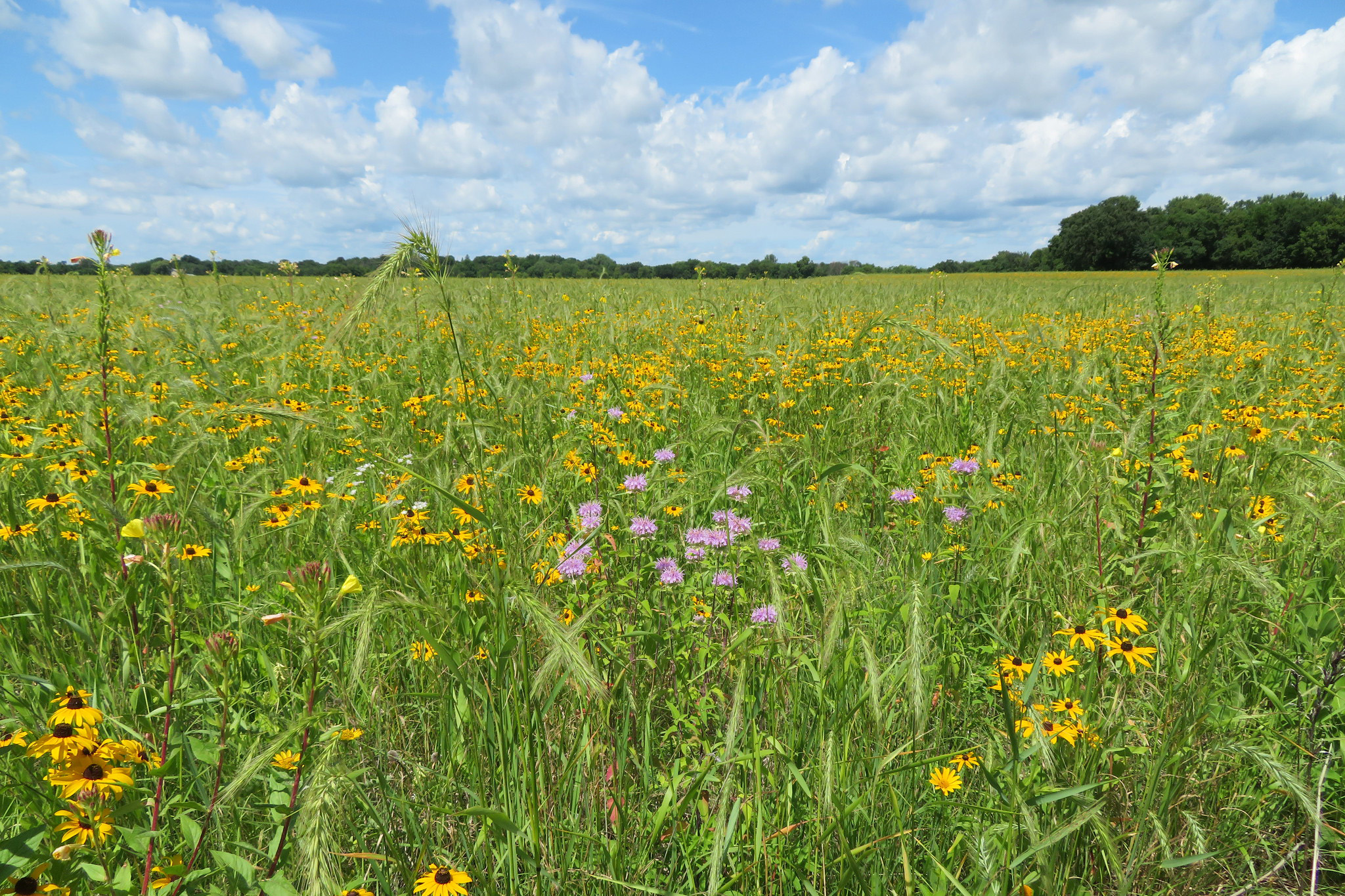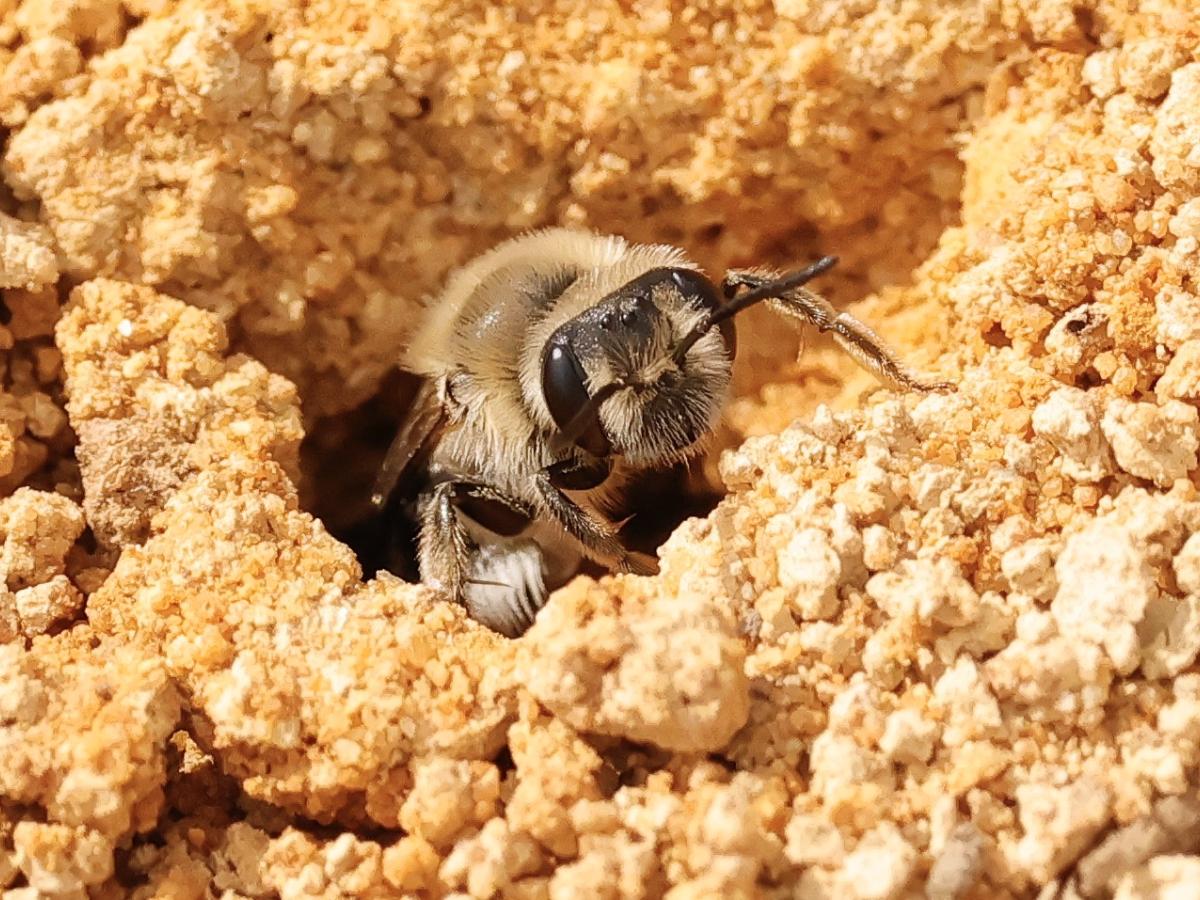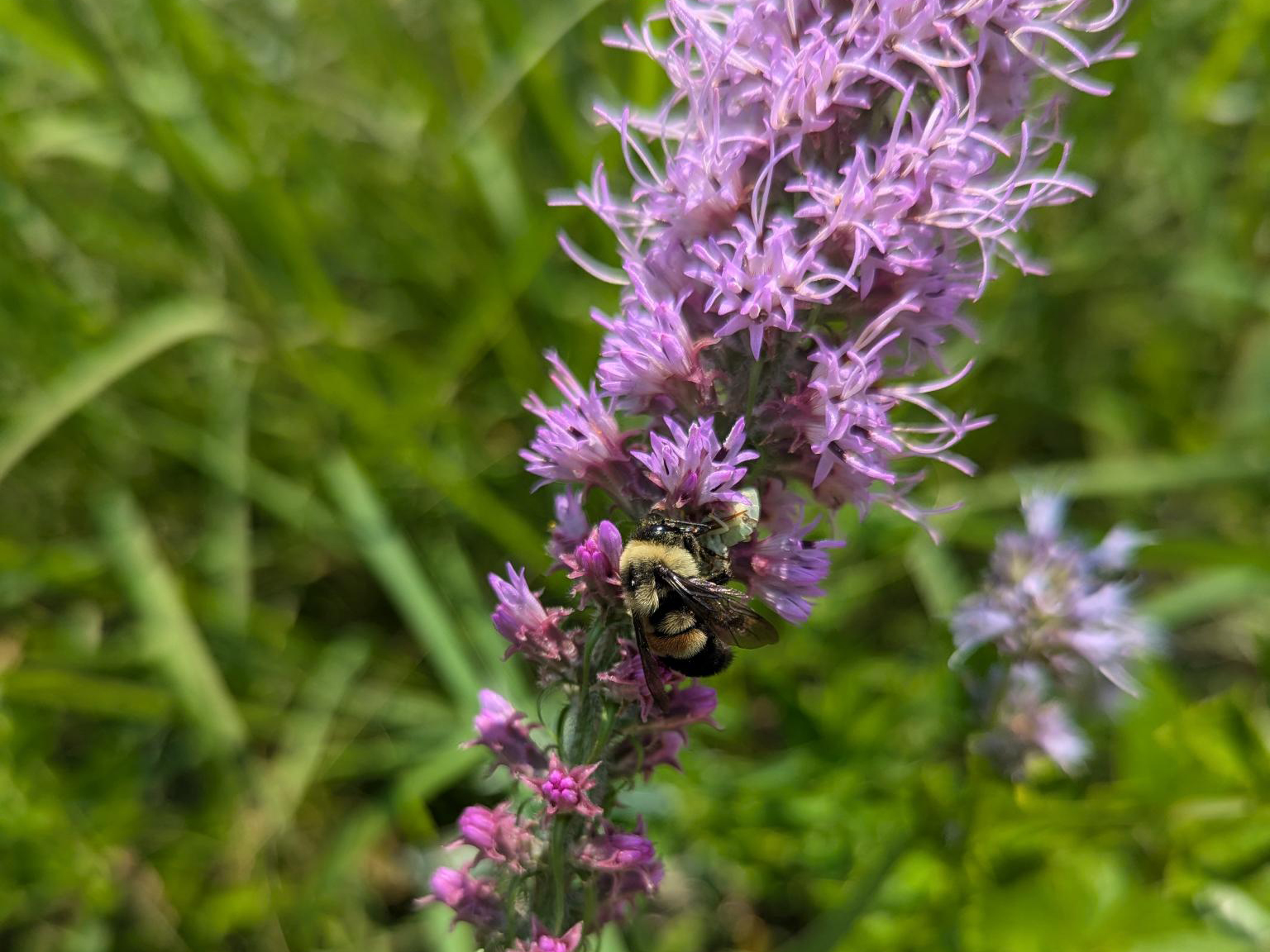FMR becoming a powerhouse for pollinator protection

Two new FMR initiatives are big wins for pollinator protection and research, helping us better restore sites into fields of dreams — like this former soybean farm-turned prairie. (Photo by Chris Smith for FMR)
Even if you haven't seen the 1989 movie "Field of Dreams," you've probably heard the phrase: "If you build it, they will come." The sentiment motivates Kevin Costner's character to build a baseball diamond in his Iowa cornfield so that legendary players will appear. (Spoiler alert: They do.)
That sentiment drives our restoration work, too. If we build quality habitat, pollinators will return to the site, and other wildlife will follow — creating a field of dreams of another kind.
We can be pretty sure that if we design a restoration with a diverse array of plants of varied heights, colors and bloom times, that site will support a greater diversity of pollinators. And we know that more pollinators will support a greater diversity of birds and so on up the food chain. But it's just a hypothesis we need to test to understand better and find out what more we can do.
We've seen this hypothesis play out at our project sites thanks to some past wildlife surveying efforts. Now, a growing focus of our work is more intensive pollinator monitoring and research. With good questions and better data to answer them, we can improve our restoration methods and management to create the best possible habitat for pollinators and wildlife.

Weird, wild and wonderful: MN's native bees
FMR Pollinator Biologist Julia Leone shares what's wild about some of Minnesota's 500+ bee species.
Now batting: Dr. Julia Leone, FMR's Pollinator Biologist
Before joining FMR as our first on-staff pollinator biologist, Julia's research at the University of Minnesota focused on assessing the effects of prairie management techniques on pollinator populations. This work fits right in with FMR's goals of improving the impact of our restoration methods.
Now, along with the rest of FMR's Land Conservation staff, Julia is helping to lead two large pollinator-related initiatives that took off in 2024.
Perhaps our most exciting initiative is our project titled "Assessing Restorations for Rusty-Patched and Other Bumble Bee Habitat." Thanks to $75,000 of funding from the Environmental and Natural Resources Trust Fund as recommended by the Legislative-Citizen Commission on Minnesota Resources, we'll embark on this new research project to better understand habitat value for the rusty-patched and other native bumble bees at several of our restoration sites for the next three years.
We'll be asking these research questions:
- What restoration seeding methods and seed mix diversity levels provide the best habitat for bumble bees?
- How do habitat assessment tool predictions compare with our on-the-ground field surveys?
- How do prairie restorations differ from prairie remnants (areas that have remained prairie since before European colonization) in terms of bumble bee habitat quality?
This research will not only help guide our restoration efforts at FMR but will also inform the work of other conservation practitioners and contribute to a growing wealth of data and scientific knowledge within the broader scientific community. Understanding where our restoration efforts are successful or lacking in their provision of bumble bee habitat can help us prioritize time, effort and funding for the activities most likely to positively impact the pollinators we need and love.
Practice makes perfect
We're putting what we learn from that grant into practice with our new, large-scale National Fish and Wildlife Foundation-funded project: "An integrated approach to monarch and pollinator habitat creation in the Twin Cities, Minnesota: planning, restoration, enhancement, and community participation."
The foundation's $233,000 investment will enhance more than 600 acres of pollinator habitat at FMR's metro-area sites through the end of 2025. It will also support management planning for new restoration sites, like Camp Cozy in Elk River and Highlands of River Pointe Preserve in Otsego. Lastly, the project will strengthen some of our current community-based, long-term monarch and pollinator monitoring programs and establish new volunteer monitoring programs, including one at our William H. Houlton Conservation Area site in Elk River.

We found this rusty-patched bumble bee on blooming blazing star at one of FMR's restoration sites this summer.
A rusty-patched bumble bee double-play
To support these projects, Julia and FMR's summer interns have been hard at work collecting pollinator and vegetation data from a subset of FMR's sites. You may have seen the results from last year's surveys, which documented 2,984 individual pollinators and found that surveyed pollinators used native floral resources 42 times more often than non-native, invasive plants.
This year, we're using vegetation data to assess pollinator habitat at our sites. We're beginning to connect what we see in terms of surveyed pollinators to our site's seed mixes and restoration histories. What we learn will help us adaptively manage our sites. For example, suppose we see fewer pollinators in a particular window of the growing season. In that case, we can link that observation to the need for more blooms and enhance our seed mixes accordingly.
We'll analyze our survey data this winter, but we already have some big news to share: So far this summer, we spotted the federally endangered rusty-patched bumble bee at two separate FMR restoration sites!
While finding that rare bumble bee at our sites certainly lends some credence to the iconic line from "Field of Dreams," we'll continue to ensure that we're not leaving things up to chance. Our latest pollinator initiatives will help us better design all our restorations — a win for pollinators and wildlife.